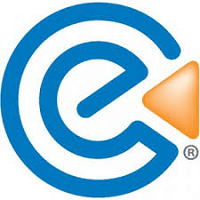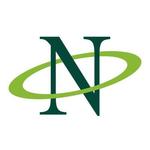What is Zoo Software?
Zoo software is a type of software program that is specifically developed to manage and organize data for zoos, aquariums, and other animal-related organizations. It is a sophisticated and comprehensive application that enables zoo administrators and staff to expedite everyday duties, maintain animal inventory and health, and improve overall operations.
Zoo Software stands out for its specialized features and customization choices that adapt to the specific needs of a zoo. These elements may include animal record-keeping, horticultural management, personnel scheduling, and visitor management. Zoo software can store and retrieve massive amounts of data, making it a central hub for all zoo-related information, allowing for better decision-making and management.
Investing in dependable Zoo Software can help zoo owners and management increase efficiency and output significantly. It can automate mundane chores like animal feeding schedules and health checks, saving up time for more critical tasks. Furthermore, zoo software can help track crucial statistics like animal reproduction and conservation initiatives, making it a critical tool for a zoo's overall performance.
When considering purchasing Zoo Software, seek for a user-friendly design, adjustable features, and outstanding customer service. A demo or trial period can also help determine which software best meets the unique demands of each zoo.
What Are the Recent Trends in Zoo Software?
In recent years, the world of zoos and wildlife conservation has seen a dramatic technological transition, and zoo software has emerged as a vital tool for both zoo management and visitor experience.
This buyer's guide attempts to provide an overview of the most recent trends in zoo software and assist purchasers in making an informed decision.
1. Mobile apps: With the proliferation of smartphones, zoos now rely heavily on mobile applications. These apps provide guests with interactive maps, species information, and event calendars, ensuring a seamless and personalized experience. Zoo software companies are constantly enhancing their mobile app services, including features such as virtual tours, audio instructions, and animal feeding schedules.
2. Data Analytics: Zoos are data-rich settings, hence zoo software with data analytics capabilities has become increasingly popular. These tools enable zoo administrators to measure visitor trends, study animal behavior, monitor exhibit popularity, and make data-driven decisions to improve the tourist experience and animal care.
3. Virtual and Augmented Reality: Zoos have been experimenting with virtual and augmented reality to improve the display experience, especially for endangered and inaccessible species. The creation of zoo software applications that may provide a virtual reality experience has gained traction, with visitors enjoying the ability to interact with virtual animals in their natural environment.
4. Conservation and Education: Zoos play an important role in educating the public about the value of conservation, and zoo software has emerged as a significant instrument in this effort. Software developers have started including features such as species information, conservation initiatives, and scientific data to engage visitors and raise awareness about endangered species and habitats.
5. Online Ticketing and Membership administration: Zoos have adopted online ticketing and membership administration as normal practices, and zoo software companies have made it easier with integrated solutions. These systems enable visitors to order tickets and memberships online, which reduces wait times and increases revenue for zoos.
Benefits of Using Zoo Software
Zoo software is a strong and versatile application developed primarily for animal care institutions, zoos, and wildlife conservation groups. It includes a number of features and benefits that can significantly increase the efficiency and efficacy of zoo management.
In this buyer's guide, we'll go over the main benefits of adopting zoo software and how it may improve your entire operations.
1. Streamlined management: One of the most major benefits of adopting zoo software is that it simplifies administration procedures. With tools like animal inventory management, scheduling, and task assignment, you can easily manage all of your tasks and obligations. This saves time and effort, enabling you to focus on more important elements of zoo operations.
2. Centralized Data: Zoo software enables you to keep all of your data in a one spot, making it simply accessible and searchable. This eliminates the need for paper records and human data entry, which are both time consuming and error-prone. Furthermore, the software includes data analytics and reporting tools, which provide vital insights into your zoo's operation.
3. Animal Welfare: Another big advantage of adopting zoo software is that it prioritizes animal welfare. The software includes features like medical record management, treatment plans, and animal behavior tracking, which allow you to track and monitor the health of the animals in your care.
This ensures that patients receive the finest possible care while also helping to preserve their overall health and happiness.
4. Visitor Management: Zoo software provides visitor management tools like ticketing and membership management, which make it easier for visitors to enter, sell tickets, and renew their memberships. This not only simplifies the procedure for visitors, but also gives useful data for marketing and future development.
5. Cost-effective: Implementing zoo software can result in long-term cost savings. With effective management and data tracking, you may decrease unnecessary staff hours, reduce paperwork, and reduce errors, ultimately saving time and money.
6. Scalable: As your zoo expands and evolves, so will the demand for effective management tools. Zoo software is meant to be easily expandable, so you can add additional features and users as needed. This allows you to adjust the program to your individual requirements and respond to changes in your operations.
Important Factors to Consider While Purchasing Zoo Software?
When it comes to choosing zoo software, numerous crucial considerations must be considered. As a buyer, you must ensure that the software fulfills your specific goals and specifications while also providing a consistent and user-friendly experience.
To assist you make an informed decision, we've listed the most important things to consider when selecting zoo software.
1. Feature set: The first item to evaluate is the software's feature set. What functions and capacities does it provide? Does it have features like animal data tracking, scheduling, ticketing, and reporting? Make a list of the features that are critical to your zoo and confirm that the software you are evaluating has them.
2. User Interface: The software's user interface is vital to its usability. A confusing and cluttered interface can make it difficult to navigate and utilize the product efficiently. Look for software with a straightforward and easy-to-use user interface.
3. Customization Options: Each zoo has its own operations and requirements. As a result, the software's modification options must be carefully considered. Can you adjust the layout, fields, and reports to meet your exact requirements? Choose software that can be customized to meet your zoo's specific demands.
4. Compatibility: This is a crucial consideration, especially if you plan to integrate the program with other systems or apps. Check that the software is compatible with your current software and hardware to avoid compatibility issues in the future.
5. Scalability: As your zoo grows and expands, you may need to add additional features and users to the program. It is critical to select software that is scalable and can handle future growth. Consider the maximum number of users and animals the software can support.
6. Support and Training: Using zoo software, like any other software, may require some time to become proficient. Therefore, it is critical to assess the assistance and training supplied by the software business. Look for a provider that provides training and assistance so that your team can use the program efficiently.
7. Security: Because zoo software holds sensitive information such as animal records and financial data, security must be a high emphasis. Make sure the software employs encryption and has safeguards in place to secure your data from cyber attacks.
8. Reviews and Recommendations: Before acquiring any software, conduct thorough research. Seek feedback and recommendations from other zoos that have utilized the software. This will provide useful insights regarding the software's performance and user experience.
What are the key features to look for in Zoo Software?
Zoo Software is a type of software designed specifically for managing and maintaining zoos and their activities. As a buyer, navigating the market's diverse possibilities might be overwhelming.
With that in mind, below are the essential characteristics to look for in Zoo Software to help you make an informed decision about your organization's requirements.
1. Animal Management System: The major purpose of Zoo Software is to manage and track the many animals in the zoo. Look for a system that lets you establish and maintain detailed profiles for each animal, such as its species, age, health history, and behavior.
2. Exhibit Management: The software should include tools that allow you to manage and plan the layout of the zoo's exhibits. This includes the ability to construct interactive maps, set feeding and cleaning schedules, and keep track of the displays' status.
3. Ticketing and Membership: Effective ticketing and membership administration are critical to the smooth operation of a zoo. Look for software that includes online ticketing, membership administration, and connectivity with POS systems to ensure seamless transactions and data recording.
4. Education and Outreach: Many zoos offer educational programs and outreach activities to involve the community. Look for software that has program management options such as event scheduling, attendance tracking, and feedback collection.
5. Reporting and Analytics: Data is critical for making sound judgments. A strong Zoo Software should include a reporting and analytics tool that gives real-time data on attendance, sales, and animal health. This allows you to identify areas for improvement and make data-driven decisions.
6. User-Friendly Interface: The software should have an intuitive user interface that is simple to use and comprehend. This is critical for training personnel and ensuring the software's smooth adoption throughout the firm.
7. Customization and Integration: Each zoo has distinct requirements and processes. Look for software that may be customized to meet your organization's specific needs. Additionally, make sure that the software interfaces with other systems you use, including accounting or fundraising software.
8. Customer help: As with any program, you may require technical help or have questions regarding the system's functionality. Look for a software provider who provides dependable customer assistance, whether by phone, email, or chat, to resolve any issues that may emerge.
When selecting Zoo Software for your firm, consider these crucial aspects to make an informed purchase. Keep your zoo's specific goals and budget in mind while looking for software to assist streamline operations and improve the visiting experience.
Why Do Businesses Need Zoo Software?
There are many reasons why businesses need Zoo Software, but they all boil down to order and efficiency. Zoo software is a helpful tool for businesses in the zoo industry to make things run more smoothly, keep track of their animal collections, and make the entire experience better for guests.
One of the main reasons businesses desire Zoo Software is so they can keep track of their animals more easily. Businesses can use the application to keep all of their animals' important information, such their health records and breeding histories, in one place. This makes it much easier for zoos to keep an eye on their animals' health and make smart decisions about how to care for them.
Zoo Software helps businesses with ticketing and guest management in addition to managing animals. This makes the ticketing process faster and easier, lowers the chance of mistakes, and helps zoos learn more about what their visitors like and how they act. Because of this, firms may be able to improve their marketing plan and give their customers a more personalized experience.
Zoo Software also includes tasks that help protect animals. A lot of zoos have programs to protect animals, and software can assist them gather, analyze, and report on these efforts. Not only does this help businesses see how well their efforts are working, but it also gives them vital information for future conservation programs.
Zoo Software also has important capabilities for managing facilities, like scheduling maintenance, keeping track of inventory, and managing tasks. This makes sure that the zoo's facilities are kept up and that all of the work is done on time and well.
Lastly, Zoo Software may help businesses save both time and money. The program gets rid of the necessity for manual labor and the chance of human error by automating numerous tasks and giving users powerful tools for analyzing data. This cuts costs and makes better use of resources.
How Much Time Is Required to Implement Zoo Software?
There are a number of factors that affect how long it takes to set up Zoo program, such as the size of the zoo, how complicated the program is, and how well the team is ready. But it can take anywhere from a few weeks to many months to fully set up the program.
The first stage in the implementation process is usually to talk to the zoo to find out what they need and figure out which software features and modules will work best for them.
This time usually lasts from a few days to a week, depending on when both sides are free. After the first meeting, the program may need to be changed to fit the zoo's needs. This process could take anything from a few days to a few weeks, depending on how much customization is needed.
After the unique software is finished, the zoo staff will need to learn how to use it correctly. The length of the training will depend on how hard the program is to use and how many people will be using it.
Training usually lasts between one and three weeks. Once the training is done, the software needs to be linked to the zoo's existing systems and databases. This procedure can take anything from a few days to a few weeks, depending on how well the systems work together.
Lastly, the software needs to be tested to find and fix any problems or bugs. This procedure can take anything from a few days to a week, depending on how complicated the software is and how many bugs there are. The Zoo Software installation procedure usually takes four to six weeks.
However, it may take longer if the zoo has particular needs or is a bigger business. The zoo needs a dedicated team to aid with the deployment process and make sure that the switch to the new software goes smoothly and successfully.
What Is the Level of Customization Available in Zoo Software?
There are several ways to customize zoo software to meet the needs of any zoo or wildlife facility. Different software providers have different levels of customization, but here are some important things to think about when looking at the level of customisation in zoo software.
1. Visual Customization: The look of the software is one of the first things that comes to mind when people talk about customization. Most zoo software comes with a lot of different themes, color schemes, and branding options that let zoos make the program fit with their brand. This not only makes the software feel more personal, but it also makes the zoo's operations look more professional and put together.
2. Dynamic Features: Each zoo has its own demands and requirements, and the software should be able to meet them. You can tell how customizable zoo software is by how many features it has and how flexible they are. Look for software that has features that you can simply change to meet the way you work and your operations. For instance, if your zoo has a set feeding schedule, the software should make it easy for you to design and keep track of it.
3. Data Management: Managing data is an important part of running a zoo, and the software should let you change data fields to fit your needs. This includes keeping track of animal records, veterinary treatment, conservation initiatives, and other things. A configurable data management system lets zoos store and organize information in a way that works best for their needs, which makes data administration faster and more accurate.
4. Reporting Features: Zoo software should have customized reporting features that let you keep track of important performance indicators and learn more about how the zoo works. Zoos can readily see how far they've come toward their goals by using customizable reports that let them focus on the metrics that are most important to them. This level of flexibility also lets zoos make reports that are exclusive to certain groups, such funders, board members, and government agencies.
5. Working with tools from other companies: You can also tell how customizable zoo software is by how well it works with other tools and systems. This lets zoos easily add their current systems and processes to the platform, making it a natural part of how they do business. For instance, connecting with ticketing systems or accounting software can make things run more smoothly and save time and money.
Which Industries can benefit the most from Zoo Software?
Zoo software is a form of software made just for zoos and other places that work with animals. It has a lot of important features and tools that zoos need to run and operate smoothly. Zoo software is mostly made for zoos, but other businesses may also find it useful. However, there are still several fields that may really benefit from adopting this software.
Let's examine more closely at the fields that could gain the most from zoo software.
1) Parks and zoos for animals As was said before, zoos and animal parks are the main businesses that can benefit from zoo software. These places contain a lot of moving parts, such taking care of animals, handling money, selling tickets, and putting on events.
Zoo software may make these tasks easier and faster, which helps zoos function more smoothly and successfully. Adding things like interactive maps, information about animals, and virtual tours can also make the experience better for visitors.
2) Groups that work to protect the environment Zoo software can also help conservation groups. These groups are in charge of taking care of and conserving endangered species and their homes. Zoo software lets them keep track of the number of animals in zoos, find places where animals can mate, and see how well conservation measures are working. The software can also help with running educational programs, managing donations, and raising money.
3) Schools and other places of learning Schools and universities with zoo programs can potentially use zoo software to their advantage. The program can help you keep track of student projects, research, and learning activities. It can also help plan field trips and educational outreach initiatives for kids of all ages.
4) Centers for rescuing animals and wildlife It's not easy to take care of a lot of different animals at a wildlife or animal rescue facility without good organization and management. Zoo software can assist these places maintain track of the animals, their medical data, and how well they are doing in therapy. It can also help in planning and keeping track of donations and volunteers.
Conclusion
In conclusion, picking the appropriate zoo software for your business may make things run more smoothly, save time, and make the whole experience better for guests. Before you buy something, you should carefully think about your needs and the features, compatibility, and support that different solutions offer.
Also, don't forget to think about how scalable it is and how much it will cost to buy in the long run. You can choose the best zoo software for your facility with confidence if you follow this buyer's guide. Keep in mind that buying a full-featured, high-quality software package will help your zoo run more smoothly and, in the end, make it more successful.
We appreciate you taking our advice into account, and we wish you the best of luck in finding the right zoo software for your business.


















